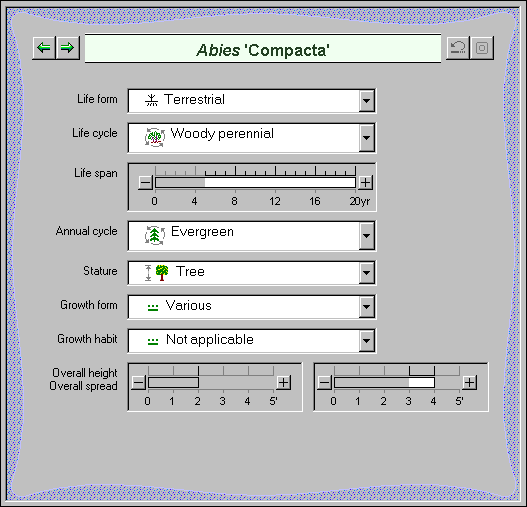
|
The Life cycle view is used to describe the general stature, growth
habit, and life cycle of the specimen. |

| Life form |
This is usually "terrestrial" for most angiosperms and gymnosperms.
Use this item to classify plants as bryophyte (mosses, liverworts,
hornworts), epiphyte (air plants), or aquatic (plants living in water). |
| Life cycle |
Describes in layman's terms how a plant progresses from germination to
death, something like: annual, biennial or perennial. |
| Life span |
The typical longevity of the plant. This should be one year for
annuals, two years for biennials, and a range of years (two or more) for
perennials. |
| Annual cycle |
Defines whether this is a deciduous or evergreen species. This is
only applicable to perennials. |
| Stature |
In gardener's terms, what type of plant is this: tree, shrub,
vine, groundcover, flower, etc. |
| Growth form |
If this is a tree or shrub how does its visual form appear from a
distance: dense, compact, pyramidal, and so forth. |
| Growth habit |
If this is a groundcover, vine or flower does it grow upright without
support or does it tend to stay close to the ground: ascending, climbing,
mound forming, spreading, and the like. |
| Overall height |
How tall is a typical specimen at maturity. |
| Overall spread |
How wide is a typical specimen at maturity. This is often referred
to by nursery labels as "planting distance" or "spacing". |
|
|